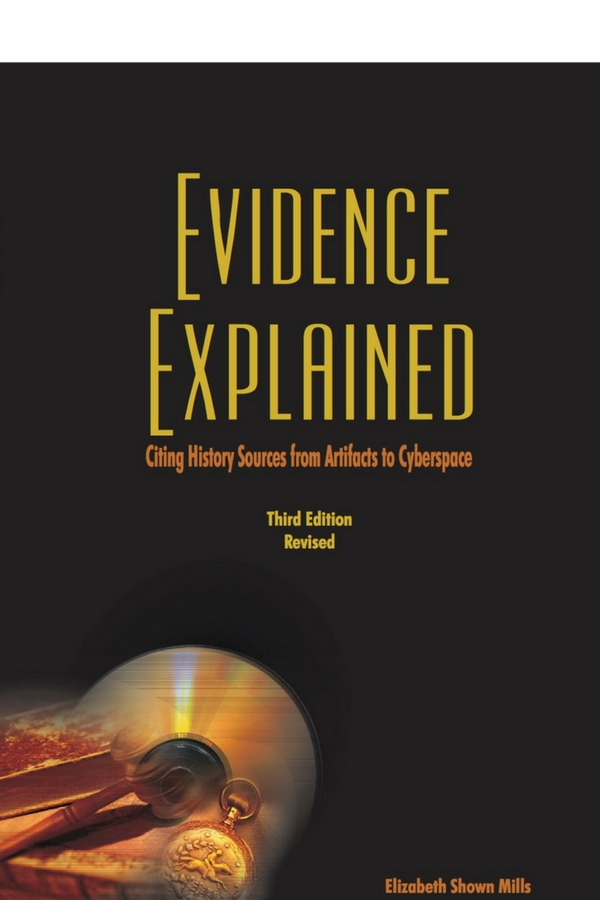
“Family History Standards,” by Elizabeth Shown Mills
Excerpted from Evidence Explained: Citing History Sources from Artifacts to Cyberspace,
3d ed. rev. (Baltimore: Genealogical Publishing Co., 2017), pp. 18–19, §1.5.
“Modern family history (aka genealogy) draws heavily from law in its handling of evidence. However, family-history standards require a higher level of proof than does most litigation.
The justice system demands that a date be set for trial, that all known and valid evidence be considered at that time, and that a decision be made then and there on the basis of that evidence. To avoid clogging the courts, the law permits decisions on civil suits to be made in the closest of cases—even when the evidence on one side barely outweighs that on the other. (This is the legal standard of proof called preponderance of the evidence.)
Except for courtroom presentations of genealogical evidence, family history rarely has an arbitrary time by which one must decide an identity or kinship. If sufficient evidence does not exist to accept or reject a hypothesis, we can—and should—simply delay a decision until that evidence is found or accumulated. Modern standards for family history also require more precision and rigor than commonly applied in the social sciences. There, individual oversights or errors on common folk tend to cancel each other out in the broader interpretations of society. Not so with family history.
Consequently, standards of proof for family history are more akin to standards in the hard sciences, where repeated experiments will expose errors. By its nature, this form of history focuses upon the individual; and every individual—great or small—is a life to be studied, genetically identified, and placed properly in the human family tree. Correct identity is the foundation upon which all else rests. Unlike some forms of science, genealogy accepts no margin of error. A single error in identity or kinship will be multiplied exponentially with each generation beyond the error. Errors will occur. But family historians today approach their work with the mindset that errors are unacceptable.
The standard of proof set by family history’s scholars and professionals—the Genealogical Proof Standard—poses five conditions that a valid conclusion must meet:
- reasonably exhaustive research, using the best sources that survive;
- complete and accurate citation of sources, with each assertion keyed to the specific source or sources that support it;
- skilled analysis and correlation of data;
- resolution of any conflicts in the evidence;
- a soundly reasoned, written conclusion that details all the evidence, analyses, and documentation—that is, either a proof argument or a proof summary, depending upon the complexity of the evidence.”
For more information about the contents of Evidence Explained. Citing History Sources from Artifacts to Cyberspace. 3rd Edition Revised, please click the button below.
Recent Blog Posts




